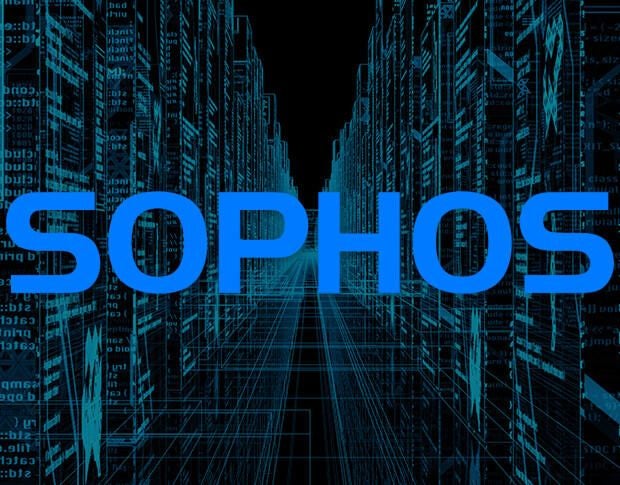Ubuntu Server is more popular than ever, thanks to containers and the cloud. This resource guide about Ubuntu Server covers why the platform matters, how to use it, and more.
Ubuntu Server is an open source platform that does more than you might think. With its ability to serve as an internal company server or to scale all the way up and out to meet enterprise-level needs, this operating system can do it all.
This cheat sheet is an easy way to get up to speed on Ubuntu Server. We’ll update this guide periodically when news and updates about Ubuntu Server are released.
Executive summary
- What is Ubuntu Server? Ubuntu Server is a server operating system, developed by Canonical and open source programmers around the world, that works with nearly any hardware or virtualization platform. It can serve up websites, file shares, and containers, as well as expand your company offerings with an incredible cloud presence.
- Why does Ubuntu Server matter? Back in 2015, it was reported that Ubuntu was twice as prevalent on Amazon Cloud services as all other operating systems combined. Ubuntu Server doesn’t just work well in the cloud, it rules the cloud. For small- to mid-size businesses looking for a cost-effective server solution, Ubuntu should be your first stop.
- Who does Ubuntu Server affect? Linux powers 37% of global websites, and of that percentage, 35.9% is Ubuntu (with Red Hat at a mere 3.4%); this indicates there’s a fairly high likelihood that a site you use is powered by Ubuntu Server. In fact, even Microsoft uses Ubuntu Server images in its Azure platform.
- When was Ubuntu Server released? Ubuntu Server was first released October 20, 2004, and it has been steadily improving and spreading its reach ever since.
- How do I start using Ubuntu Server? Download a copy of the latest release, burn it onto a disk or create a bootable USB drive, insert the bootable media into your server, and install.
What is Ubuntu Server?
Ubuntu Server is a server operating system developed by Canonical that runs on all major architectures: x86, x86-64, ARM v7, ARM64, POWER8, and IBM System z mainframes via LinuxONE. Ubuntu is a server platform that anyone can use for the following and much more:
- Websites
- FTP
- Email server
- File and print server
- Development platform
- Container deployment
- Cloud services
- Database server
Ubuntu Server has these minimum requirements:
- RAM: 512MB
- CPU: 1 GHz
- Storage: 1 GB disk space (1.75 GB for all features to be installed)
One benefit that makes Ubuntu Server so appealing is it’s cost effective. Anyone can download a copy of the latest version of Ubuntu Server and deploy it on as many machines as necessary–at zero cost (minus hardware and time).
The latest release includes important upgrades to the platform. Ubuntu Server now supports ZFS (a file system with built-in snapshot capabilities) and includes the first production release of Data Plane Development Kit (DPDK), which is a set of libraries and drivers for fast packet processing.
If you run a small company and you’re looking for an easy to deploy file server or web server, Ubuntu Server could handle that and so much more. If you’re an enterprise-level company looking to scale out an OpenStack Cloud, a massive render farm, or a Hadoop cluster, Ubuntu has you covered. And for those who are looking to work with Ubuntu as a guest on a virtual environment, Ubuntu Server has been certified for AWS, Microsoft Azure, Joyent, IBM, and HPE Cloud.
Just because Ubuntu Server is open source (and free to download), businesses need not worry about a lack of support; thanks to Canonical, you can purchase enterprise-grade support for the platform. Available support plans include:
- Ubuntu Advantage for virtual servers: From $250 per year
- Ubuntu Advantage for servers: From $150 per year
- Ubuntu Advantage for clouds: Standard $750 per year, Advanced $1,500 per year, Managed $15 per day/per node
Additional resources
Why does Ubuntu Server matter?
Over the last few years, the cloud has become a central point of focus for IT and users, and that shift has been a major boon to Canonical and Ubuntu. Ever since Infrastructure as a Service (IaaS) has taken off, Ubuntu has become one of the biggest players in running these services from the cloud. Ubuntu has become the first choice for administrators and DevOps engineers looking to deploy OpenStack.
And then there’s Docker, one of the most popular container deployment platforms on the market. Ubuntu Server makes setting up Docker incredibly easy–so much so that nearly any level IT pro can make deploying containers a reality. Containers can go a long way to helping you expand your company offerings to staff, clients, and customers.
Another advantage Ubuntu Server has over many platforms in its class is the new(ish) snap package feature. Snap packages are universal packages that contain all necessary dependencies and can be installed with a simple command (such as sudo snap install nextcloud). Snaps can also be easily updated with a single command (sudo snap refresh), so there are fewer administrative tasks.
If the Ubuntu Server features aren’t enough to sell you, read these stats:
Additional resources
Who does Ubuntu Server affect?
Ubuntu Server affects everyone from IT pros, developers, CFOs, and end users.
Let’s consider one element of Ubuntu Server: the cloud. Gartner has predicted that by 2020 the cloud will consume nearly $1 trillion in IT spending. That’s massive. Now, think about this:
The conclusion to draw is that Ubuntu Server is not only ruling the cloud, but it will continue to be a major force to lead IT to that $1T mark.
If your business has yet to deploy Ubuntu Server, be patient–it will. As companies and users become more dependent on the cloud, Ubuntu Server will become even more necessary. Fortunately for IT pros, the platform makes rolling out containers and clouds incredibly simple.
Additional resources
When was Ubuntu Server released?
Ubuntu Server made its first appearance with the release of Ubuntu 6.06 (Dapper Drake) on June 1, 2010. As with every release since, Ubuntu images can be downloaded for either a desktop or a server platform.
The server release uses the same repositories as the desktop, so since inception, there has been a continuity between the editions. Ubuntu Server has always released sans GUI; due to the sharing of repositories, it is possible to install a graphical environment.
Ubuntu Server has come a long way since its humble beginnings. When Ubuntu Server was initially released, it was widely considered an option for mail, FTP, and web servers. Now, the sky’s the limit.
Additional resources
What are Ubuntu Server’s competitors?
The competition on the server platform is fierce, with open source and proprietary solutions available. The primary competition for market share is:
Of the above offerings, only CentOS and Fedora Server are free.
How do I start using Ubuntu Server?
If you’re going to install Ubuntu Server on bare metal (or by way of a virtual host, such as VirtualBox or VMware), you need to download a Ubuntu Server ISO image and either burn that image onto a CD/DVD or create a bootable USB flash drive. Insert the media in the target hardware and boot up. The installation of the operating system is as easy as any other OS, if not easier.
If a cloud deployment is your route of choice, you’ll want to log into your deployment dashboard (such as the Amazon EC2 Console) and walk through that cloud service’s deployment process.
No matter which path you take, starting out with Ubuntu Server is fairly painless. Out of the box, you will be working from the command line, so get up to speed with tools such as apt-get.





